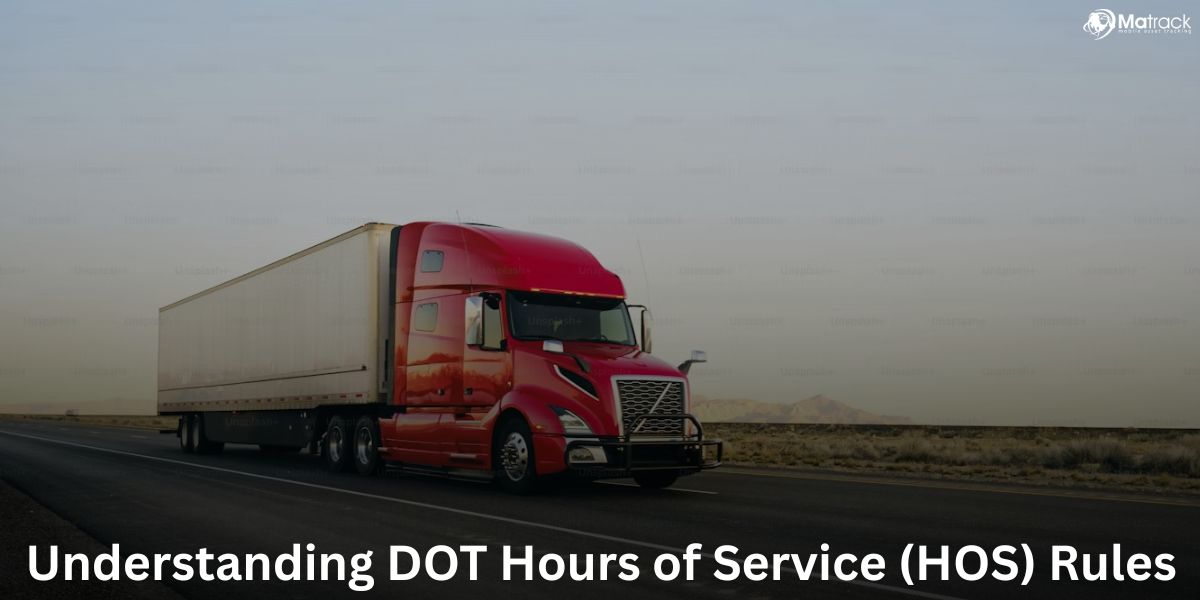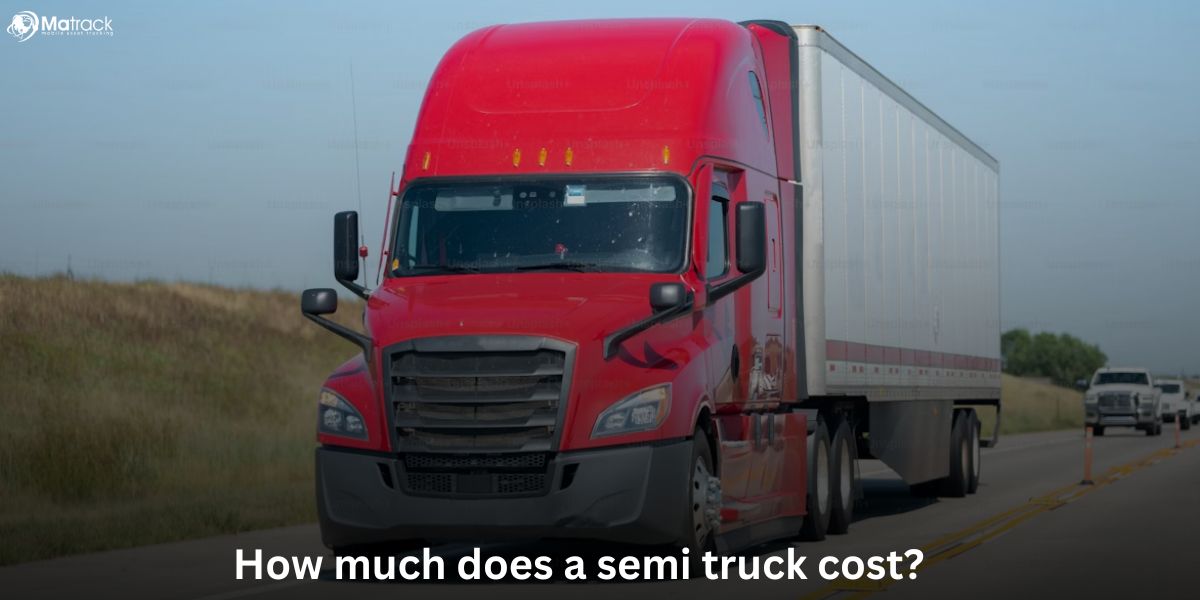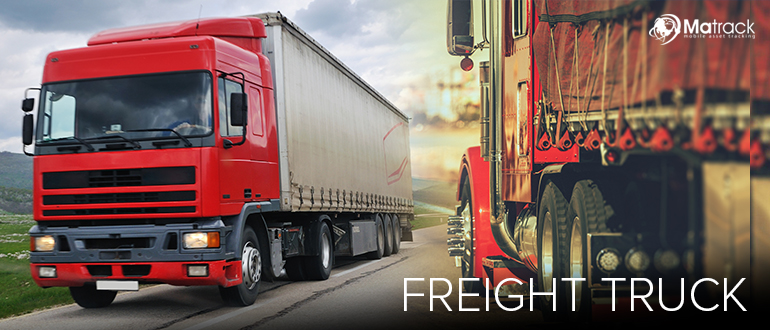Key Takeaways:
- A dry van truck is an enclosed trailer used to transport non-perishable goods safely and securely.
- There are three types of dry vans: standard, pup, and straight trucks—each suited for specific transport needs.
- Dry van trucks are ideal for industries like retail, automotive, and manufacturing due to their cost-efficiency and cargo protection.
- Matrack supports dry van operations with GPS tracking, ELD compliance, and dash cams for safety and efficiency.
What Does Dry Van Mean In Trucking?
A dry van in trucking is a large, enclosed trailer used to move dry goods that do not need temperature control. It keeps cargo safe from rain, wind, dust, and theft during transport.
These semi-trailers are used to haul items like clothes, furniture, or packaged food. Dry vans are the most common type of freight trailer in road shipping.
Dry van trucks are fully enclosed with walls made of aluminum or composite and floors made of hardwood. They are usually 53 feet long and can carry up to 45,000 pounds of dry, non-perishable goods.
What Are The Types of Dry Van Trucks?
Standard Dry Van Trailer
These trailers are 48 to 53 feet long and used for both full truckload (FTL) and less-than-truckload (LTL) shipments. They are ideal for long-distance hauling and are the most commonly used dry vans.
Pup Trailer
Pup trailers measure between 26 to 28 feet in length and are best for short routes in cities. Their smaller size makes them easier to maneuver in tight urban spaces.
Straight Truck (Box Truck)
Straight trucks have a built-in cab and cargo box, making them compact and easy to operate. They are widely used for last-mile deliveries and by small businesses for local transport.
When Should You Use Dry Van Trucks For Shipping?
Dry van trucks are widely used across different industries to transport dry, non-perishable items. Each sector depends on dry vans for their reliability, safety, and cost-effective logistics.
Retail and E-commerce
Retailers and online sellers use dry vans to move goods like clothes, electronics, and packaged items. These trucks ensure the products reach distribution centers and stores in good condition.
Automotive
The automotive industry relies on dry vans to deliver essential parts such as engines, tires, and batteries. These parts require secure and enclosed transport to avoid damage.
Consumer Packaged Goods (CPG)
Companies in the CPG sector move everyday items like soaps, paper goods, and canned food using dry vans. These products stay protected from weather and handling risks during transit.
Manufacturing
Manufacturers use dry vans to ship raw materials, tools, and machine components. The enclosed space keeps industrial goods safe from dirt, moisture, and theft.
Books and Stationery
Publishers and suppliers ship books, school supplies, and office materials in dry van trucks. These items require a stable, dry environment to prevent bending or water damage.
How Dry Van Shipping Works?
Dry van shipping follows a clear and organized process that helps move goods safely and efficiently. Each step in the workflow ensures the cargo is handled properly from pickup to last-mile delivery.
Cargo Planning
The process begins by checking the size, weight, and packaging of the freight. This step helps choose the right trailer and plan the loading method.
Trailer Loading
Goods are loaded into the trailer from the rear using forklifts or pallet jacks. Proper stacking and placement help make full use of space.
Securing the Load
Straps, load bars, or locks are used to keep the cargo from shifting during transport. This prevents damage and keeps the shipment stable.
Transportation
The truck follows a route that’s planned to save fuel and time. Route optimization tools help reduce delays and costs.
Unloading
At the destination, goods are unloaded at docks, often using a set schedule. Some warehouses use automated systems to speed up this process.
What Are The Benefits and Limitations of Dry Van Trucks?
| Aspect | Benefits | Limitations |
| Weather Protection | Cargo stays protected from rain, snow, and wind | Not suitable for goods requiring temperature or humidity control |
| Security | Fully enclosed design reduces theft and damage risk | Access limited to rear doors, no top or side entry |
| Cost Efficiency | Lower costs compared to refrigerated or flatbed trailers | Cannot transport goods needing special handling or environmental conditions |
| Cargo Flexibility | Ideal for boxed, palletized, or stacked goods | Inflexible for oversized or irregularly shaped cargo |
| Availability | Easy to rent, lease, or schedule due to wide industry use | Limited handling options—floor loading only |
Dry Van Trucks Role in Supply Chain Strategy
Dry van trucks play a vital role in modern supply chains by acting as consistent and secure links between key shipping stages. Their design and availability make them ideal for connecting various points in both domestic and international logistics.
First Mile & Last Mile
Dry vans are essential for first mile delivery, where goods are picked up from suppliers and transported into the supply chain. They also handle the last mile, ensuring final delivery to customers is secure and reliable.
Distribution Center Link
They are commonly used to move freight between regional distribution centers and retail outlets. This connection helps maintain steady inventory levels and timely store replenishment.
Cross-border Freight
Dry van trucks support international trade by transporting goods across borders, especially in the U.S., Canada, and Mexico. Their enclosed build helps meet customs and safety requirements during transit.
What Are The New Trends in Dry Van Trucking?
Innovation and regulatory changes are continuously transforming the dry van trucking industry. These developments are improving efficiency, sustainability, and the overall shipping experience.
Telematics and GPS
Telematics systems are now integrated into dry van fleets to enhance visibility and control over shipments. They provide data on location, speed, and idle time, helping to improve delivery accuracy and fleet efficiency.
Sustainable Logistics
The industry is moving toward electric and hybrid dry vans to lower emissions. This shift supports cleaner transport and helps meet environmental regulations.
Digital Freight Matching
AI-powered platforms are connecting shippers and carriers more efficiently. These systems reduce empty miles and increase load utilization.
E-commerce Boom
The rise in online shopping has sharply increased demand for dry van shipments. More deliveries mean more need for reliable and scalable transport solutions.
Compliance and Safety Regulations
Dry van trucking operations must follow strict transport laws to ensure road safety and legal compliance. These regulations are enforced to protect drivers, cargo, and the public.
Hours of Service (HOS)
Hours of Service (HOS) rules limit how long a driver can operate without rest. They are designed to prevent fatigue and reduce accident risks.
ELD Mandate
Drivers must use ELDs to digitally record their working hours. These logs replace manual entries and improve record accuracy.
Weight Limits and Axle Rules
Dry vans must comply with FMCSA regulations on total weight and axle distribution. Overloading or improper balance can lead to fines and damage to infrastructure.
How Matrack Helps You With Dry Van Shipping?
Matrack helps dry van shipping by offering real-time GPS fleet tracking that shows where every truck is at all times. This makes it easy to manage routes, avoid delays, and keep customers updated.
The ELD device takes care of driver logs by recording hours automatically. It helps dry van drivers stay within legal limits without worrying about paperwork.
Matrack’s fleet dash cam captures both the road and inside the cab for added safety. It helps protect dry van drivers during disputes and supports safer driving habits.



